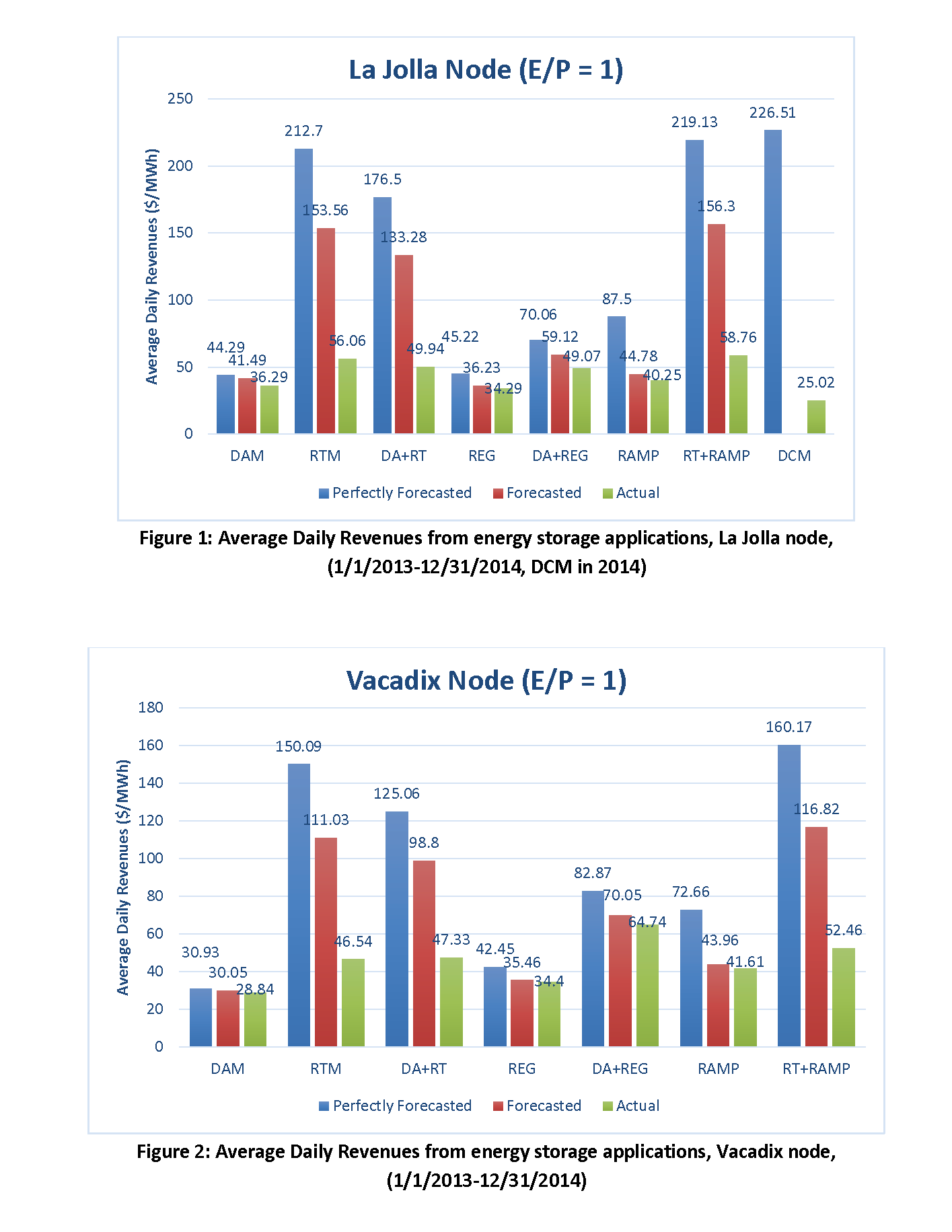Charges
This page details programs generated as part of the arpa-e CHARGES program undertaken here at UCSD. The PI is Bill Torre, along with co-PI's Jacobs School of Engineering Professor Shirley Meng and myself.
There are a number of uses for storage connected to markets that generate revenue for the owner of the storage, as well as a number of uses of storage that generate what economists call ‘public goods’, i.e. value to the community that does not result in financial gains for the owner of the storage. This project is about valuing various uses of storage where the financial gains do accrue to the owner of the storage.
Uses of storage that can generate revenue for the owner of the storage device are by engaging in markets run by CAISO which organizes the California energy markets. Due to orders by the FERC, more and more markets are coming on line over time. This project tries to provide an as accurate as possible indication of the revenues from engaging in different markets. In addition, it is possible that the storage technology can engage in multiple markets simultaneously (stacked applications), we examine this possibility as well.
All calculations are, data permitting, undertaken over two full years of operation of the storage device (2013 and 2014) where a simulation of the battery is undertaken so that control and decisions are made in real time (mimicking actual use as it might have happened) using data available at the time. The use of a long period of data provides very precise estimates as to the values of different applications of the battery.
The matlab code below constructs the testing procedure outlined in :
D.M Davies, O.Mnyshenko, R. Rajeev, M.G. Verde, Y.R. Chen, Y.S. Meng, and G. Elliott "Combined Economic and Experimental Evaluation of Energy Storage for Grid Applications , , .
The matlab code to construct the revenues and two year duty cycles should be copied to a single directory. It is in a zipped file and can be downloaded here . A quick start guide is here. Additional files regarding the duty cycles are a set of files for converting the two year cycles into one week representative cycles here and for employing duty cycles for the battery cycler are here.
In general market conditions in California are challenging for grid based storage. The figures to the right show some of the the issues. For each application three numbers are reported. The Blue values indicate operation of the storage under perfect certainly of prices, the red lines are values that would arise if the forecasts we made of these prices were true (so these are expected revenues) whilst the green lines are actual values generated when our forecasts are employed but energy shifts are valued at the actual prices in the market. The storage device is assumed to have power equal to 1MW and available storage of 1MWh.
Applications such as energy time shift rely on variations of intra day prices that are predictable. In the day ahead market (DAM) such variations are there but limited. Prices in the real time market (RTM) display spikes that entail great variation, however the timing of such spikes is difficult to predict. We also calculate revenues where after committing the battery in the DAM market we also through the day operate in the real time market (DA+RT) as a stacked application. For regulation and ramping, a number of assumptions needed to be made due to the lack of quantity data and in the case of the ramping market (which did not exist but was under consideration at the time of the study) price data as well. The higher values for ramping applications are a function of the chosen price for contingency payments. Assumptions were made as to the frequency of take-up of the offered services. The valuation of regulation suffers from a lack of pay for performance in California markets for regulation.

